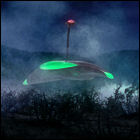 Paramount Pictures releases the George Pal-produced movie adaptation of H.G. Wells’ The War Of The Worlds in American theaters, starring Gene Barry, Ann Robinson, and Les Tremayne. Featuring groundbreaking special effects photography and painted space scenes by Chesley Bonestell, the movie is an instant hit, and will later inspire a television revival based on elements of this film.
Paramount Pictures releases the George Pal-produced movie adaptation of H.G. Wells’ The War Of The Worlds in American theaters, starring Gene Barry, Ann Robinson, and Les Tremayne. Featuring groundbreaking special effects photography and painted space scenes by Chesley Bonestell, the movie is an instant hit, and will later inspire a television revival based on elements of this film.
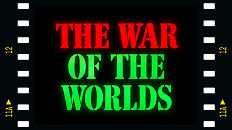 A fireball crashes into a mountainous area near a small California town, heralding the beginning of an invasion of Earth by beings from Mars, though no one realizes this yet. When Dr. Clayton Forrester, a physicist from Pacific Tech who happens to be vacationing nearby, takes a look at the object that survived re-entering Earth’s atmosphere, he hypothesizes that it must be hollow, since a solid meteorite of that size would have left a much larger crater. Forrester catches the eye of the local librarian, Sylvia Van Buren, whose uncle, the town’s church pastor, invites Forrester to stay with them while they wait for the object to reveal its true nature. But while two locals and a policeman keep a wary eye on the “meteorite” that night, an opening appears and a large, obviously artificial appendage emerges, appearing almost like a glowing red mechanical eye on a flexible stalk. When they break cover and approach it, that eye fires a beam of energy at the three men, incinerating them instantly and causing a power disruption in the nearby town. The townsfolk return to the crash site, and the appendage turns out to be just a small part of a flying Martian War Machine, a vehicle capable of surviving any human-made weapons. Even when the military is called in to direct its might toward the increasingly hostile alien device, its weapons are useless – and worse yet, other objects are landing in the hills nearby, and around the world, marking the beginning of the invasion in earnest. Forrester and Sylvia, seeking shelter in a house nearby, are trapped when another of the Martian “meteorites” slams into the side of the house. A different flexible eyestalk scans the house, and Forrester manages to disconnect it from its large, hose-like appendage; when a Martian leaves its War Machine to explore the house personally, Forrester attacks and injures it, managing to obtain some of its blood, which he and Sylvia then return to Pacific Tech so both the optical instrument and the blood can be examined by scientists. The President of the United States authorizes a nuclear strike against a nest of Martian War Machines, but their defensive shields allow them to survive the attack unharmed. The Martians begin advancing into major metropolitan areas, and everyone in Los Angeles is ordered to evacuate to safer, less densely-populated areas. Forrester and the other Pacific Tech scientists, with Sylvia’s help, begin packing up their lab so they can continue their attempts to find a weakness in the Martians at a safer location, but the throngs of people trying to escape the city overpower their vehicles, throwing away precious scientific equipment in their own desperate attempts to evacuate. Forrester and Sylvia are separated, and by the time they find each other again, it seems as though the end of human civilization is near – until something completely unforeseen causes the Martian War Machines to begin tumbling out of the sky helplessly.
A fireball crashes into a mountainous area near a small California town, heralding the beginning of an invasion of Earth by beings from Mars, though no one realizes this yet. When Dr. Clayton Forrester, a physicist from Pacific Tech who happens to be vacationing nearby, takes a look at the object that survived re-entering Earth’s atmosphere, he hypothesizes that it must be hollow, since a solid meteorite of that size would have left a much larger crater. Forrester catches the eye of the local librarian, Sylvia Van Buren, whose uncle, the town’s church pastor, invites Forrester to stay with them while they wait for the object to reveal its true nature. But while two locals and a policeman keep a wary eye on the “meteorite” that night, an opening appears and a large, obviously artificial appendage emerges, appearing almost like a glowing red mechanical eye on a flexible stalk. When they break cover and approach it, that eye fires a beam of energy at the three men, incinerating them instantly and causing a power disruption in the nearby town. The townsfolk return to the crash site, and the appendage turns out to be just a small part of a flying Martian War Machine, a vehicle capable of surviving any human-made weapons. Even when the military is called in to direct its might toward the increasingly hostile alien device, its weapons are useless – and worse yet, other objects are landing in the hills nearby, and around the world, marking the beginning of the invasion in earnest. Forrester and Sylvia, seeking shelter in a house nearby, are trapped when another of the Martian “meteorites” slams into the side of the house. A different flexible eyestalk scans the house, and Forrester manages to disconnect it from its large, hose-like appendage; when a Martian leaves its War Machine to explore the house personally, Forrester attacks and injures it, managing to obtain some of its blood, which he and Sylvia then return to Pacific Tech so both the optical instrument and the blood can be examined by scientists. The President of the United States authorizes a nuclear strike against a nest of Martian War Machines, but their defensive shields allow them to survive the attack unharmed. The Martians begin advancing into major metropolitan areas, and everyone in Los Angeles is ordered to evacuate to safer, less densely-populated areas. Forrester and the other Pacific Tech scientists, with Sylvia’s help, begin packing up their lab so they can continue their attempts to find a weakness in the Martians at a safer location, but the throngs of people trying to escape the city overpower their vehicles, throwing away precious scientific equipment in their own desperate attempts to evacuate. Forrester and Sylvia are separated, and by the time they find each other again, it seems as though the end of human civilization is near – until something completely unforeseen causes the Martian War Machines to begin tumbling out of the sky helplessly.
screenplay by Barré Lyndon
based upon the novel by H.G. Wells
directed by Byron Haskin
music by Leith StevensCast: Gene Barry (Dr. Clayton Forrester), Ann Robinson (Sylvia Van Buren), Les Tremayne (Major General Mann), Bob Cornthwaite (Dr. Pryor), Sandro Giglio (Dr. Bilderbeck), Lewis Martin (Pastor Collins), Housely Stevenson, Jr. (General Mann’s Aide), Paul Frees (Second Radio Reporter), Bill Phipps (Wash Perry), Vernon Rich (Colonrl Heffner), Henry Brandon (Crash Site Cop), Jack Kruschen (Salvatore)
Commentary by: Sir Cedric Hardwicke
Notes: The makers of Mystery Science Theater 3000 “borrowed” the name of Dr. Clayton Forrester for the mad scientist antagonist who tortures first Joel, and later Mike, with bad movies for the first seven years of that show. Paramount Pictures embarked on the production of a TV series sequel to this film in the late 1980s, one of a pair of genre series filmed in Canada to form an ad hoc genre programming package to accompany Star Trek: The Next Generation (the other series was a TV series using the name of another Paramount film franchise, Friday The 13th, though in that case there was no connecting tissue between the storylines of series and films). Ann Robinson appeared to reprise her role of Sylvia Van Buren very briefly in the War Of The Worlds TV series, which sees the Martians overcome their vulnerability to Earthly bacteria.
LogBook entry and review by Earl Green
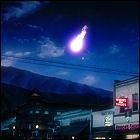 Review: If one is allowed to note only a single inflection point on science fiction’s journey from niche literary genre to popular entertainment, the George Pal production of The War Of The Worlds may well be that inflection point. Produced and released within a decade of H.G. Wells’ death (and by all accounts delighting his heirs, so much so they they allowed Pal to pick any other Welles story to adapt for the screen, which is how Pal came to produce The Time Machine), this is where golden age sci-fi literature becomes golden age sci-fi on the screen, with an all-star cast and big names behind the scenes as well (the fanciful artistic depictions of the planets in the opening montage were painted by none other than Chesley Bonestell himself).
Review: If one is allowed to note only a single inflection point on science fiction’s journey from niche literary genre to popular entertainment, the George Pal production of The War Of The Worlds may well be that inflection point. Produced and released within a decade of H.G. Wells’ death (and by all accounts delighting his heirs, so much so they they allowed Pal to pick any other Welles story to adapt for the screen, which is how Pal came to produce The Time Machine), this is where golden age sci-fi literature becomes golden age sci-fi on the screen, with an all-star cast and big names behind the scenes as well (the fanciful artistic depictions of the planets in the opening montage were painted by none other than Chesley Bonestell himself).
The special effects work in this movie is great by any standard. The design and construction of the Martian War Machines, with their illuminated eyestalks and glowing weaponized wingtips, is quite a feat; the rural setting for much of the first 2/3 of the 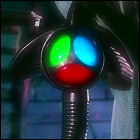 story is a wise idea, as it makes the iconic Martian vehicles seem even more advanced when the human technology we’re shown for comparison consists largely of well-worn late ’40s/early ’50s farm trucks. Could CGI artists replicate or even improve upon everything seen here today? Possibly, but I find myself marveling at how difficult it had to be to achieve these effects in the pre-digital age. The reflections of the Martians’ shields had to be an absolute bear to capture as an in-camera effect. The “welding sparks” used to show the energy beams from the Martian vehicles’ “eyes” may seem a bit hokey, but I found it also reads visually as a nasty, indiscriminate means of killing whatever the Martians judged to be an obstacle. Rather than a sterile energy beam, it reads as something dangerous. The model sequences of the Martians ravaging Los Angeles were very effective, though there were some scenes of destruction that seemed to be there just to show the Martians being jerks. Maybe a water tower looks like it might be a weapons emplacement, but once you’ve blown up that first water tower and discovered that it contains precious water, something that’s surely rarer than gold on Mars, you might not keep blowing up water towers. But of course, “blowing up a water tower” is an effect that the special effects team knows how to achieve really well, so that’s what the Martians do.
story is a wise idea, as it makes the iconic Martian vehicles seem even more advanced when the human technology we’re shown for comparison consists largely of well-worn late ’40s/early ’50s farm trucks. Could CGI artists replicate or even improve upon everything seen here today? Possibly, but I find myself marveling at how difficult it had to be to achieve these effects in the pre-digital age. The reflections of the Martians’ shields had to be an absolute bear to capture as an in-camera effect. The “welding sparks” used to show the energy beams from the Martian vehicles’ “eyes” may seem a bit hokey, but I found it also reads visually as a nasty, indiscriminate means of killing whatever the Martians judged to be an obstacle. Rather than a sterile energy beam, it reads as something dangerous. The model sequences of the Martians ravaging Los Angeles were very effective, though there were some scenes of destruction that seemed to be there just to show the Martians being jerks. Maybe a water tower looks like it might be a weapons emplacement, but once you’ve blown up that first water tower and discovered that it contains precious water, something that’s surely rarer than gold on Mars, you might not keep blowing up water towers. But of course, “blowing up a water tower” is an effect that the special effects team knows how to achieve really well, so that’s what the Martians do.
If The War Of The Worlds has a major storytelling failing, it’s this: we’re shown, just barely, the beginning of the end of the Martian invasion as War Machines begin dropping out of the sky around the world. But we don’t see 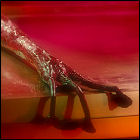 or hear the characters we’ve been following determining why; we’re told in narration, in the past tense, what happened, and the movie presages an awful lot of modern filmed science fiction by politely excusing itself out of the apocalyptic corner that it had written itself into. The characters have zero agency in even so much as finding out what happened, nor do we get to see doing anything to weaponize Earth’s plentiful bacteria. Maybe they don’t really need to, but it’s a classic case of a very hurried plot twist, and not just that, but a hurried plot twist that’s delivered by the narrator rather than on-screen action. About the only way it could’ve been any more anticlimactic would’ve been for the news to be delivered in on-screen text rather than a voice.
or hear the characters we’ve been following determining why; we’re told in narration, in the past tense, what happened, and the movie presages an awful lot of modern filmed science fiction by politely excusing itself out of the apocalyptic corner that it had written itself into. The characters have zero agency in even so much as finding out what happened, nor do we get to see doing anything to weaponize Earth’s plentiful bacteria. Maybe they don’t really need to, but it’s a classic case of a very hurried plot twist, and not just that, but a hurried plot twist that’s delivered by the narrator rather than on-screen action. About the only way it could’ve been any more anticlimactic would’ve been for the news to be delivered in on-screen text rather than a voice.
On the flipside, though, think about how this would be done today: it’d be a pre-sold movie duology, and this would be just the first half of the story. I’m not sure that’d really be much better. So while I find the movie’s last major plot development to be delivered in an unsatisfactory fashion, there’s something to be said for brevity. Maybe rather than being stretched thin 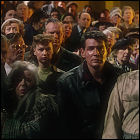 across a second movie, this one should’ve just been 15-20 minutes longer.
across a second movie, this one should’ve just been 15-20 minutes longer.
Those story-structure complaints aside, there’s a reason The War Of The Worlds is considered such a classic, and such a template-setter for the sci-fi summer blockbuster. It may err too cautiously on the side of not overstaying its welcome, but until it gets to that point, it’s all so skillfully executed and gripping that it continues to hold up well more than half a century later.
